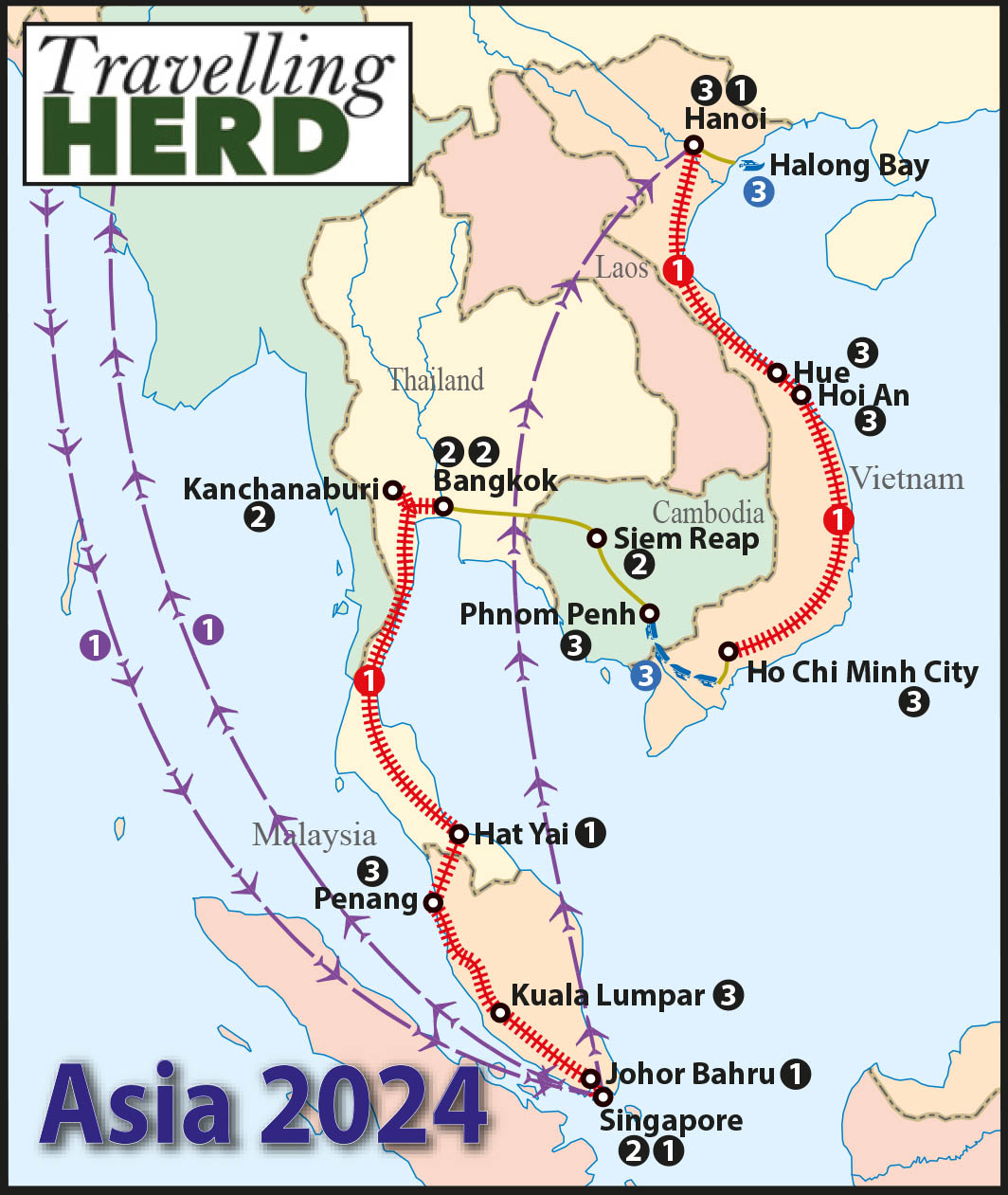Read this blog: The one where Robert tries natural viagra [snake vodka]
Sunday 24th March 2024
We woke and breakfasted early and took a taxi to the Hôtel des Arts where all the passengers were to assemble for our cruise up the Mekong River aboard the RV Indochina Pandaw. While we waited, we were provided with the best cappuccino we have had so far on this trip.
When it was our turn to register, we were told we had Cabin 317 and the Pandaw representative told us that it was “a very good cabin”. We suspected that he might say that to everyone, but when we asked other passengers, it seemed he hadn’t.
It was then about a two hour journey by coach to the embarkation point at the stylish My Tho Marina where the building has been designed to look like a cruise ship from the 1930s with porthole windows and curved balconies.
When Robert checked his paperwork, our booking was for Cabin 319, which was right at the back of the ship and next door to the one we had been assigned. He, of course, queried the change and we were told we had been moved to a better room as although 319 had an extra window, it was right above the engines and so we might be woken early when they started up in the morning.
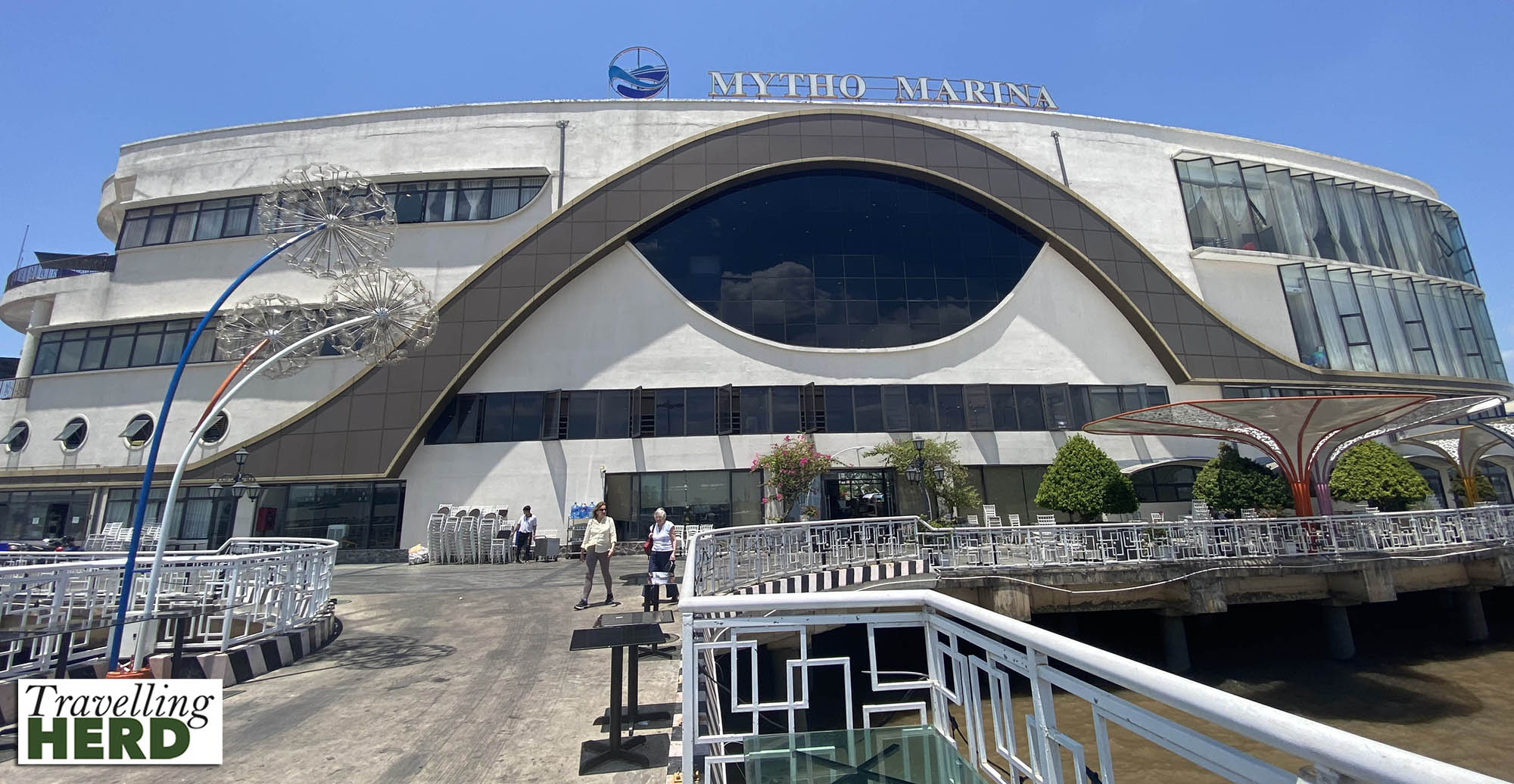
They offered us the option of viewing both cabins and then deciding and we agreed we would forgo the small rear-facing window to be further away from the engine noise and so settled happily into Cabin 317 for the next three nights.
As it transpired, the boat was usually moored up overnight but did sometimes set off before breakfast so we felt we had made the right decision.
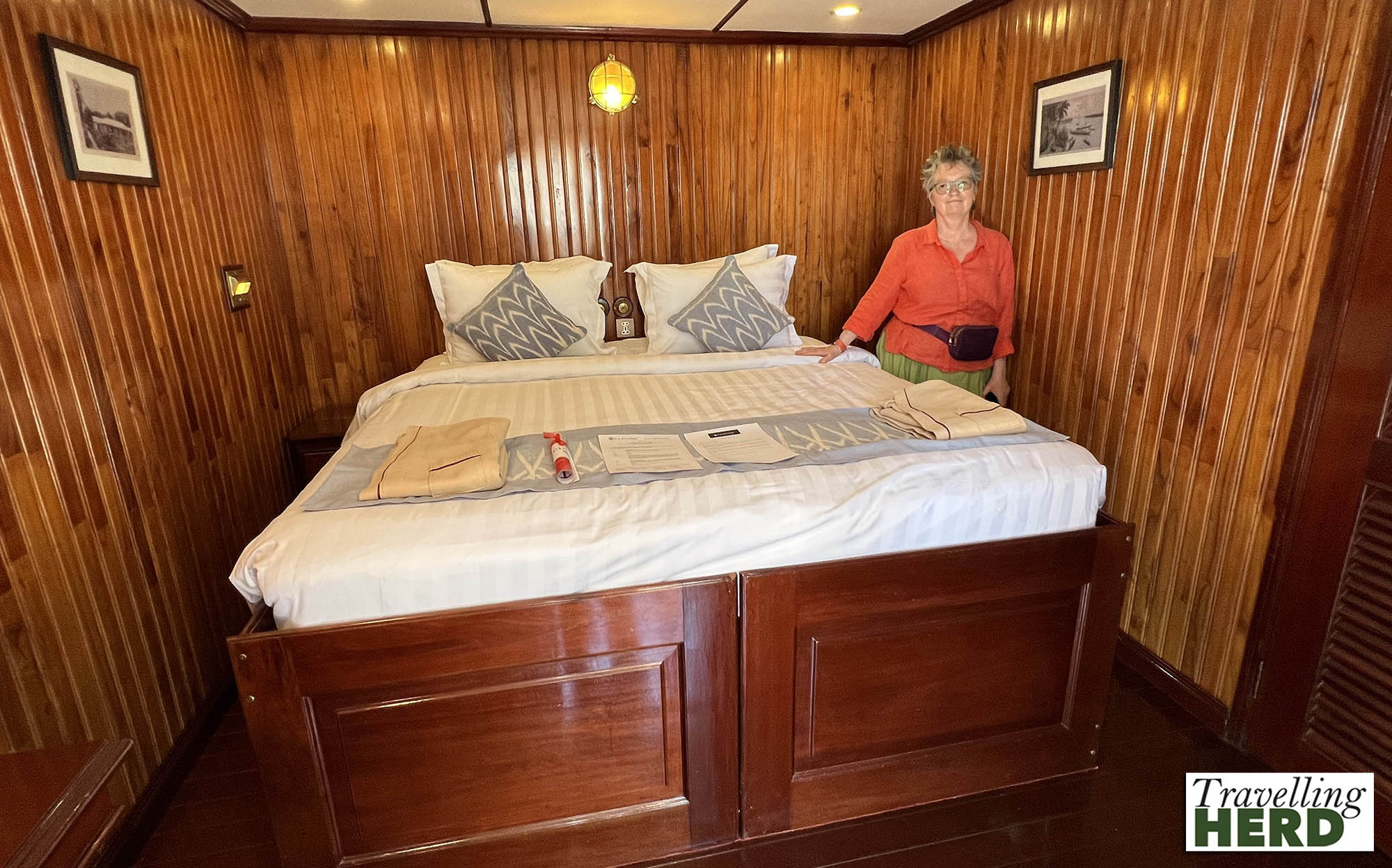
Having deposited our luggage we went to view the Sun Deck before everyone assembled in the Movie Room for a briefing about the day’s activities. One of the most crucial parts of the briefing was the importance of keeping the lights in the cabins off when going in and out at night to ensure that no insects, attracted to the light, managed to gain entry.
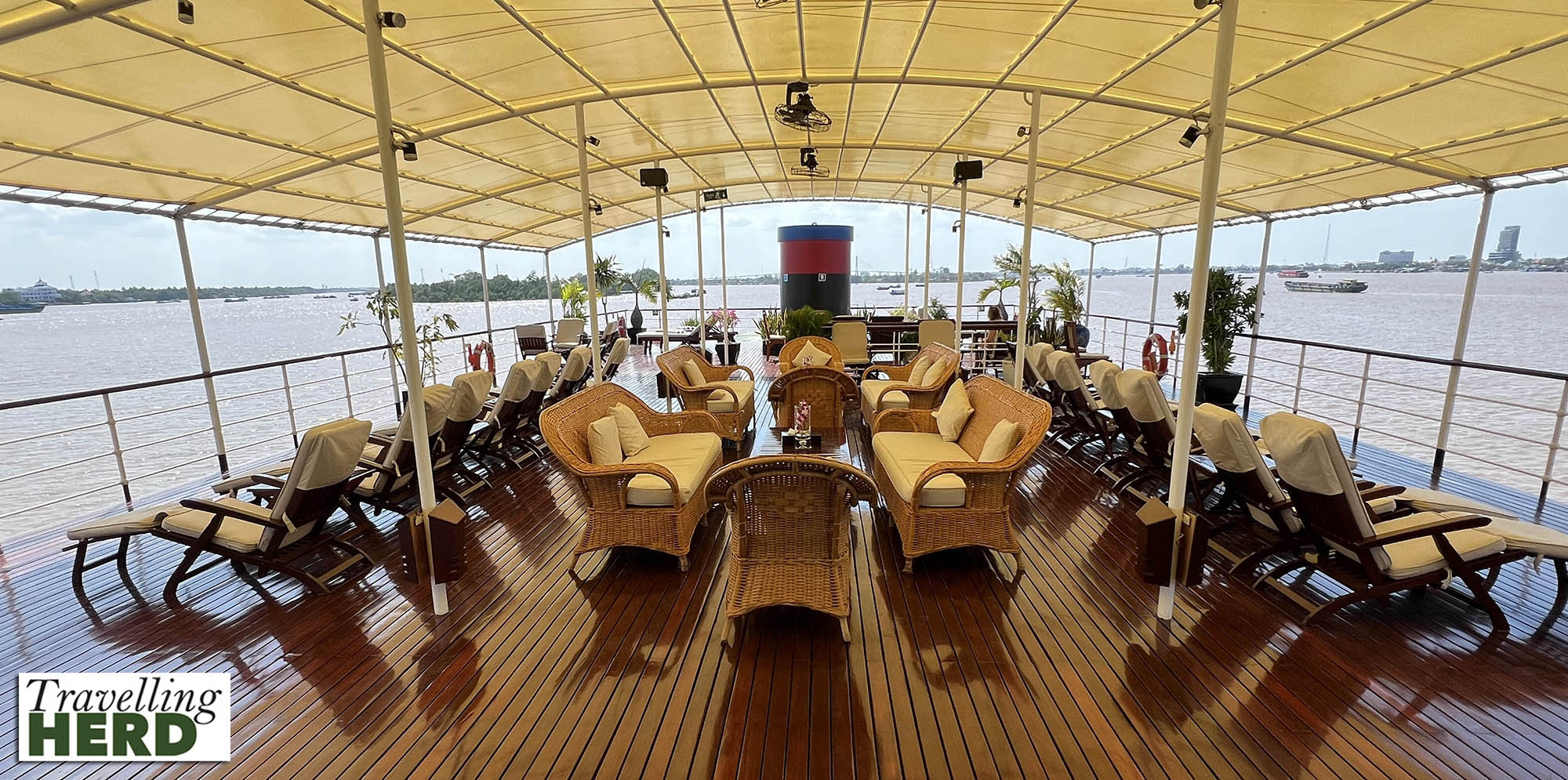
We were then served lunch as the RV Indochina Pandaw took us down river for an hour towards the sea and away from our ultimate destination of Phnom Penh.
Having moored up in the Mekong Delta we all transferred to a sampan to travel down smaller tributaries through mangroves and bamboo forests, overhung with verdant foliage.
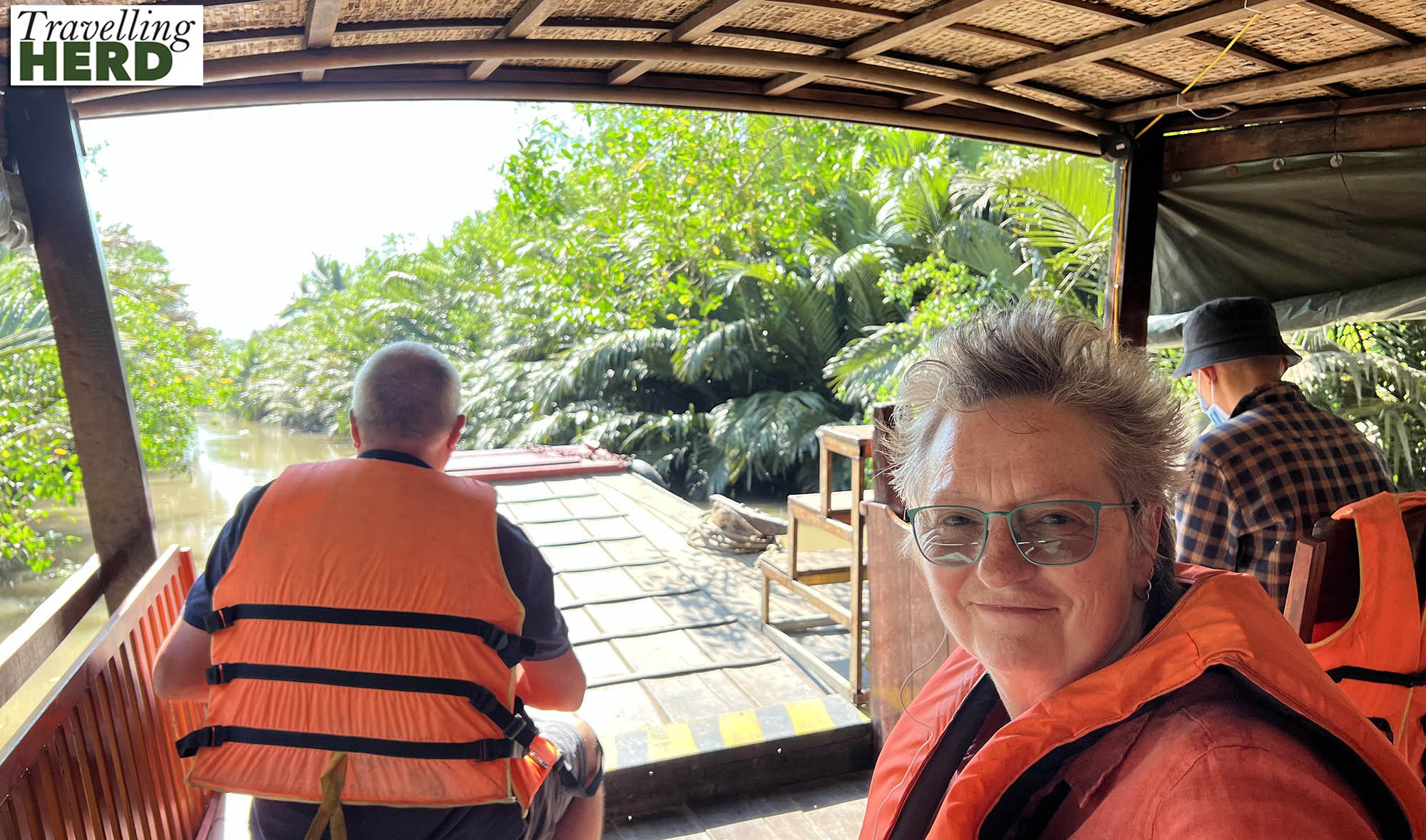
Robert felt he could have been an extra in a scene from a war film.
Our destination was the fruit orchards of Ben Tre. We walked along narrow paths past trees bearing vast jack fruits, coconuts and small clusters of bananas where the broad leaves provided some respite from the heat.
Coffee beans were also being grown and our guide told us that Vietnam is amongst the world’s leading exporters of coffee. Coffee is not indigenous to Vietnam but Arabica plants were introduced by French missionaries in 1857. In 1908 Robusta coffee was introduced and this now accounts for the majority of the Vietnamese crop which is equivalent to 20 percent of the world’s coffee and 40 percent of all Robusta beans.
Vietnamese Robusta coffee has a strong flavour and is often served with condensed milk, possibly because this keeps better than fresh milk in the heat. Other popular variations include egg coffee, which was invented in Hanoi in the 1940s during a milk shortage. When we met Joe in Hồ Chí Minh City he recommended coconut coffee which Robert tried and enjoyed but Matilda found she finds a less creamy drink more refreshing in such hot weather.
Our guide explained about Vietnamese “weasel coffee” which is also known as civet coffee or kopi luwak and is said to be the most expensive coffee in the world. It is produced by feeding Asian palm civets with ripe coffee beans. Enzymes in the digestive tracts of these animals chemically alter the beans as they pass through the gut affecting the flavour and aroma of the coffee. The partially digested coffee beans are collected, cleaned and dried to make them safe to consume. Prices can be as high as $100 per cup and we had concerns about animal welfare so this was not on our list of things to try.

Passing through the countryside on trains and buses we have frequently seen both simple stone memorials and brightly painted ones raised above the rice fields but have been unable to take photos. Often a rectangular area is partially enclosed by low walls with an opening or entrance and coffins are placed inside the area with a taller shrine or memorial to the rear.
As we walked along the path through the fruit trees, we passed houses where [we assume] family members had been laid to rest close to home so that they could continue to look over their descendants. Matilda is sympathetic to the Vietnamese tradition of burying their dead close to home. She had intended burying her mother’s ashes when planting a shrub in our garden but has not managed to do so in the last twenty years so Helen is still waiting patiently in our front room at home.

Walking out of the fruit groves the group then boarded three waiting tuk tuks.
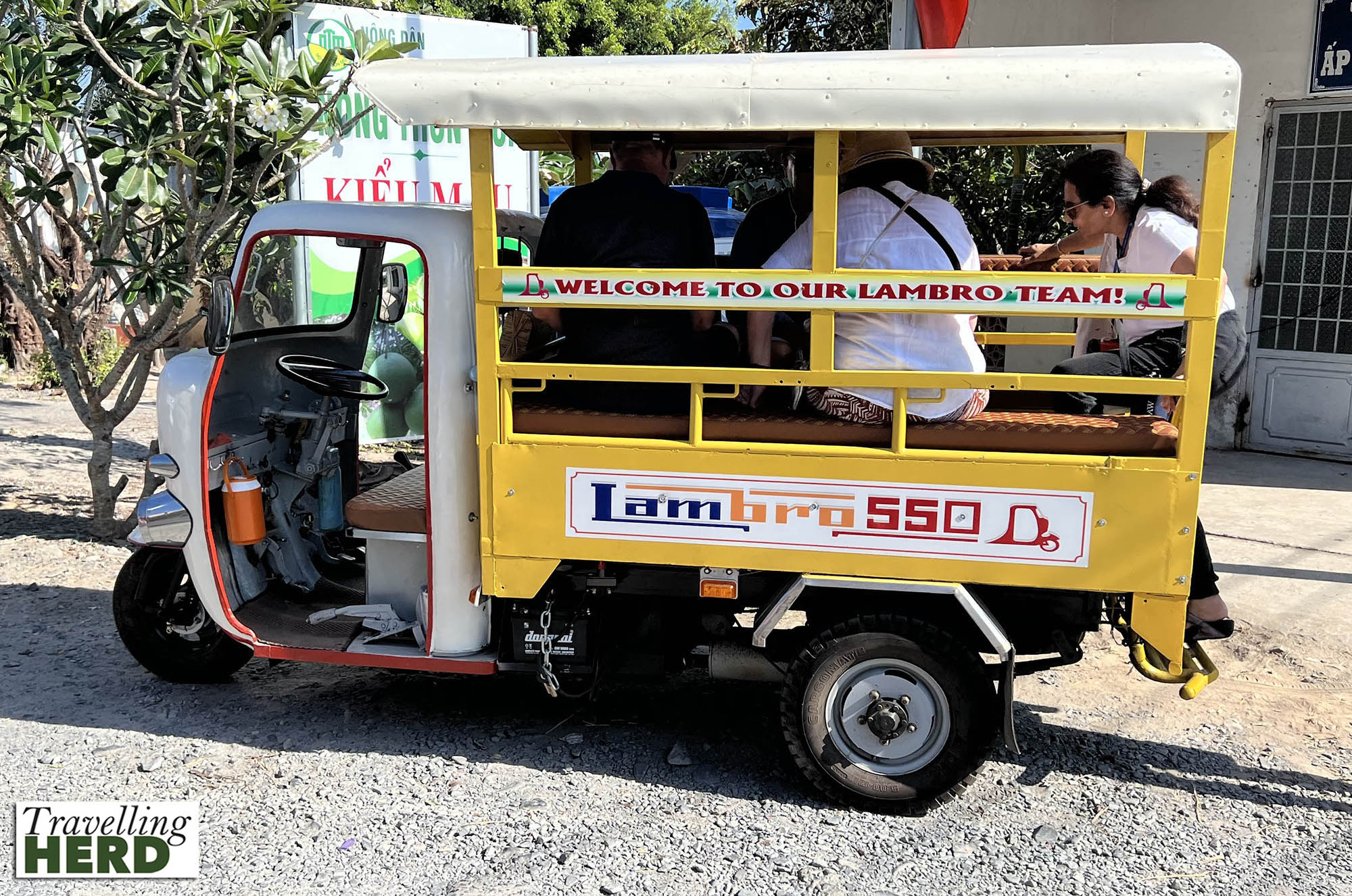
The tuk tuks took us to a village specialising in growing fruit and making local products, including coconut candy.
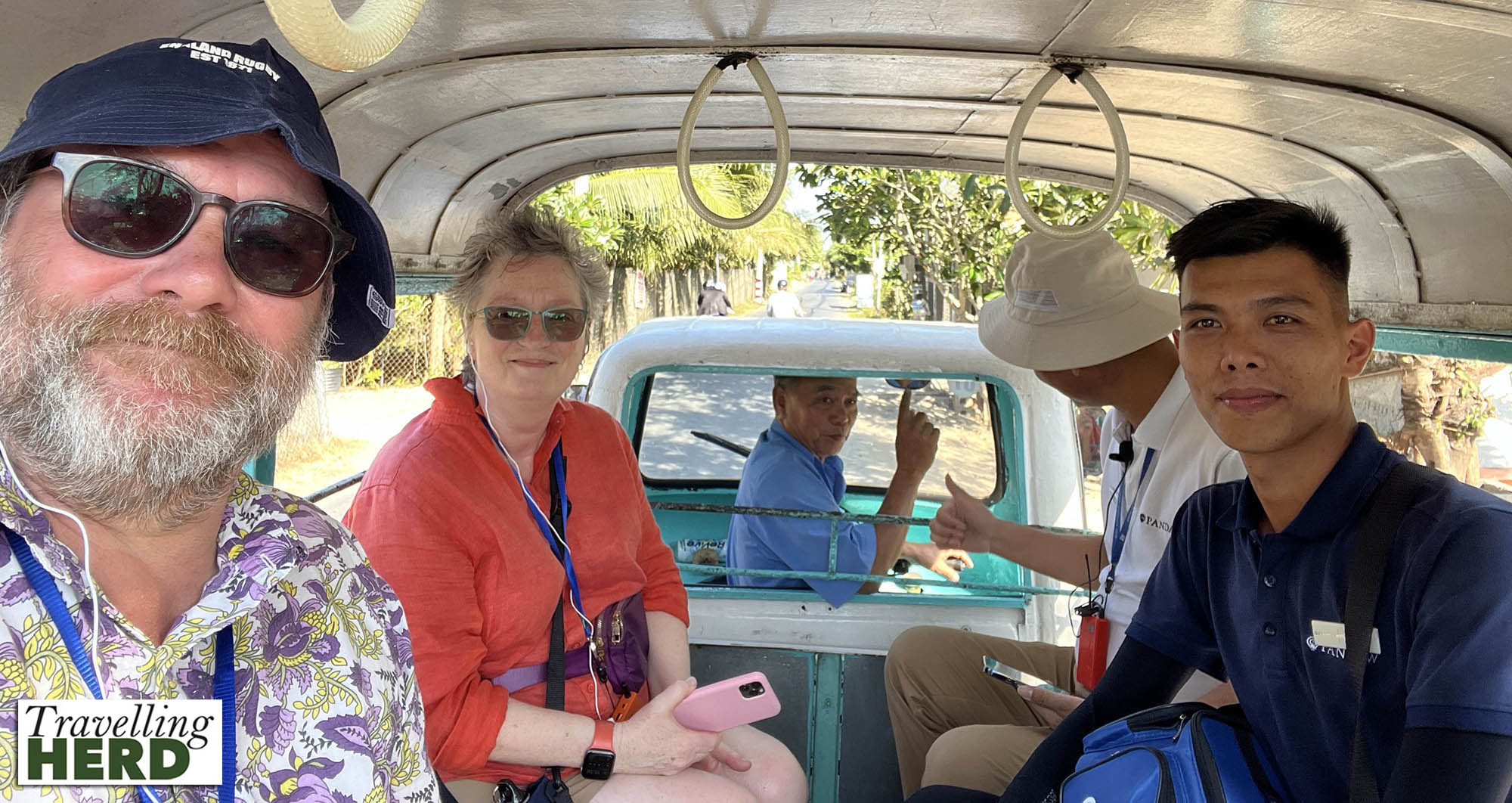
The briefing notes described the place as a Coconut Candy Factory but the guide explained that although machines are available to speed up production, sometimes families or villages choose not to invest in them as doing the work by hand provides employment for more people. The Coconut Candy Factory was definitely not mechanised and the technique for cutting open the coconuts looked extremely risky.
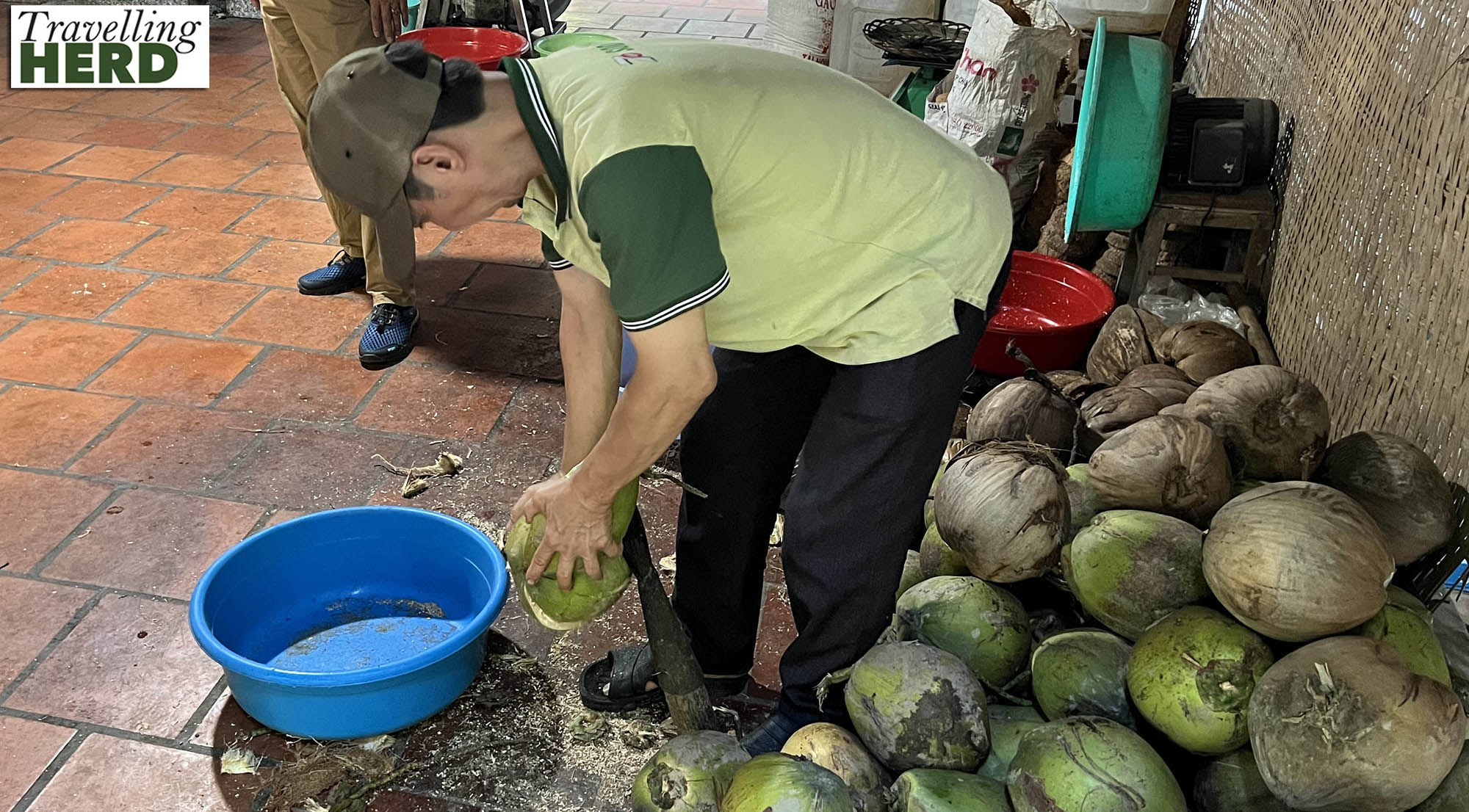
Once the coconut has been cut open, and the juice collected an implement much like a large drill bit is used to produce coconut shavings which are caught in a bowl and then cooked with the sweet coconut milk to create a caramel-like coconut candy which is shaped and cooled.
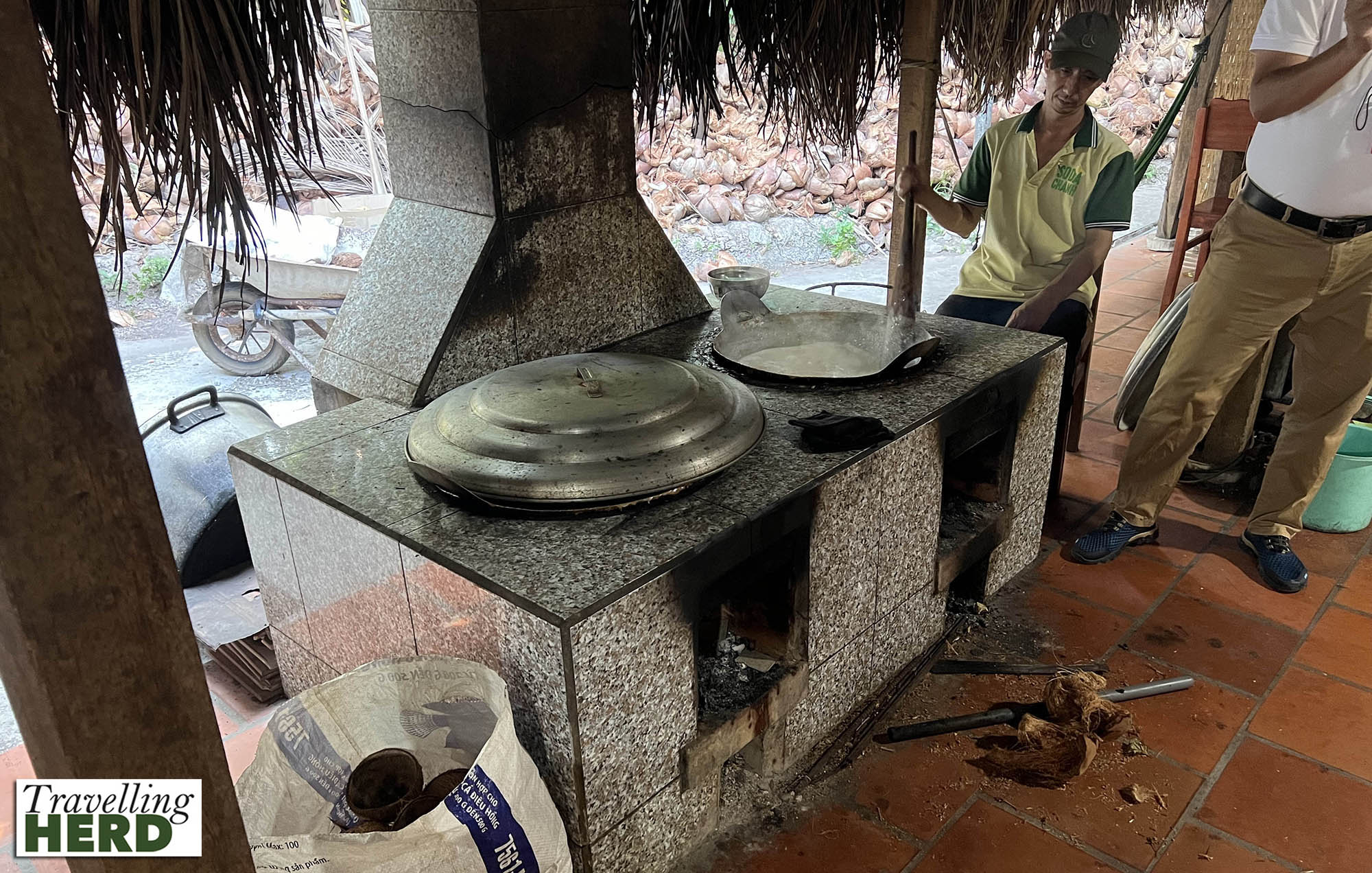
The pieces of candy are meticulously individually wrapped by hand. After tasting the candy which was tasty and sweet, we were given various local fruits to try washed down with honey tea.
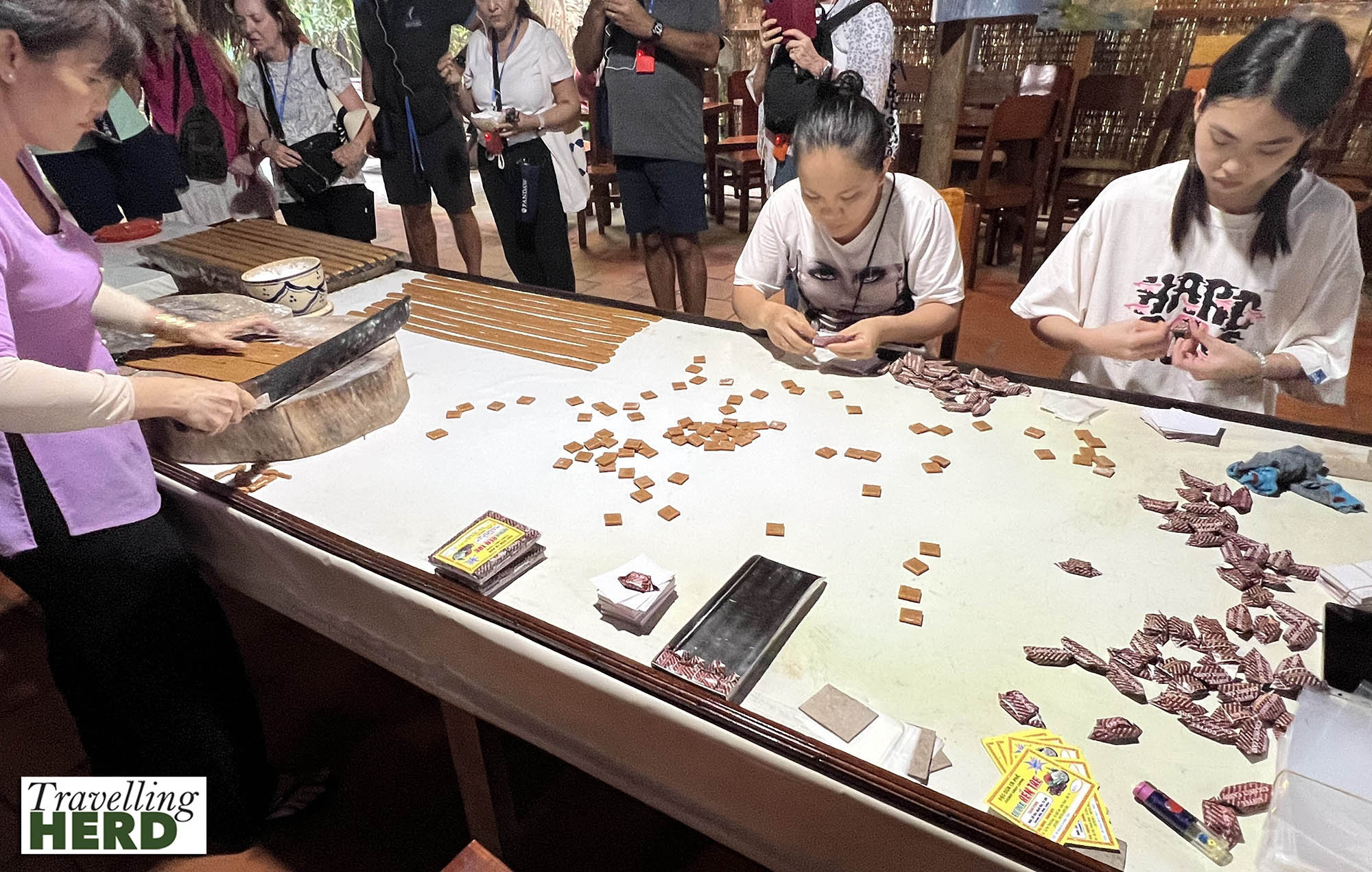
The left over coconut husks are used to fire the furnace or to make coconut bowls with brightly coloured lacquered linings. The family workers here also distilled their own vodka.
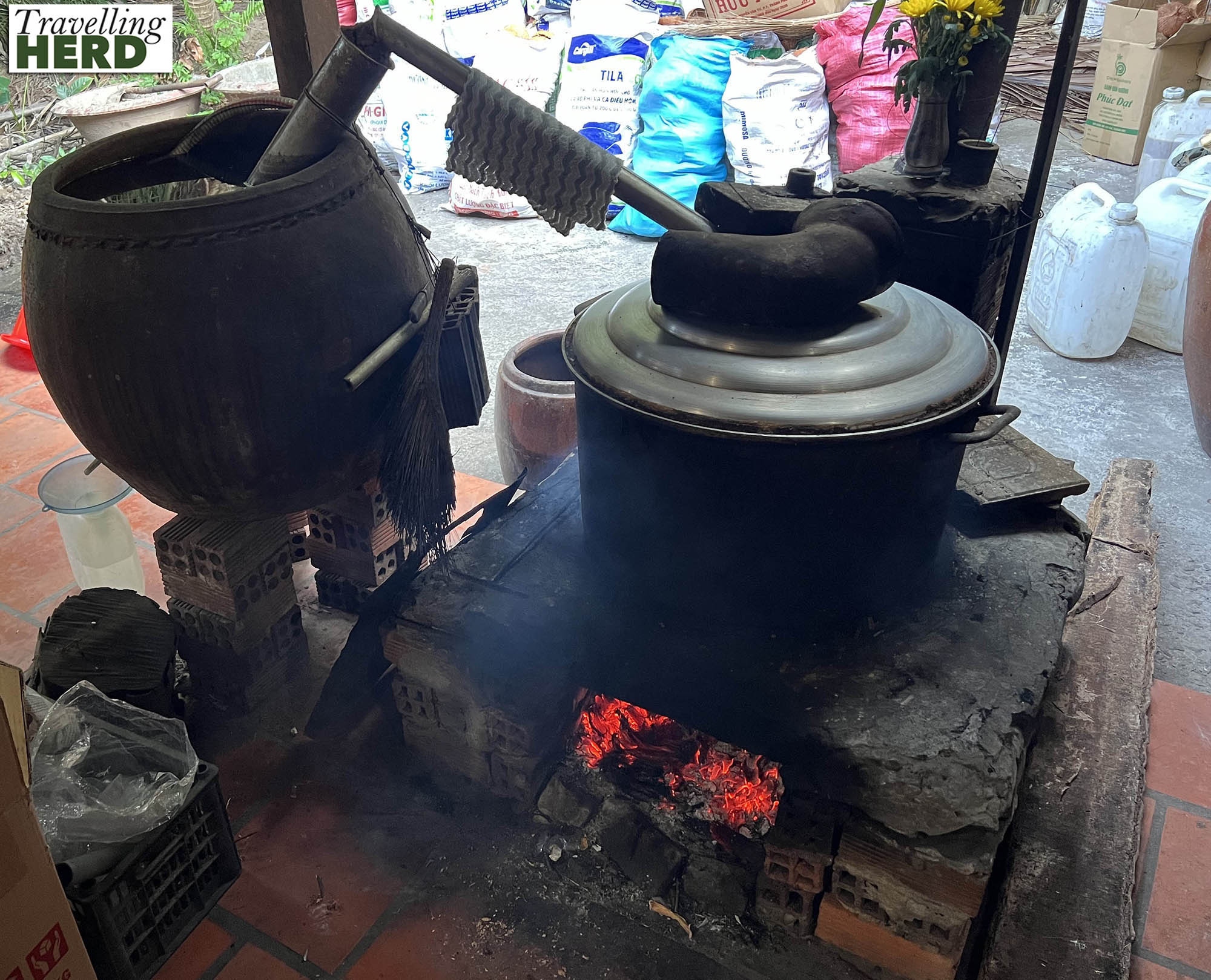
Once the basic spirit is made, various things can be added to provide flavour and offer specific medicinal benefits. We were all offered a taste. Then the women in the group were offered a sample from a batch flavoured with banana which was said to ease back pain. The men meanwhile were offered a sample from a glass dispenser with a snake inside which the guide described as “natural viagra”.

Matilda was quite pleased she was having a dry day and declined both the plain and the banana vodka. Robert, who is always prepared to sample a new form of alcohol, tried the snake version but said later that he had felt no noticeable effects.
From the Coconut Candy Factory we walked a short distance to board local row boats.

The programme stated that we would ‘journey slowly through the bamboo covered canals’. Thick stems of vegetation arched over us [see also Video of the day].
However, our oarsman had not been informed of the expected speed and we caught and overtook the rowboat ahead of us.
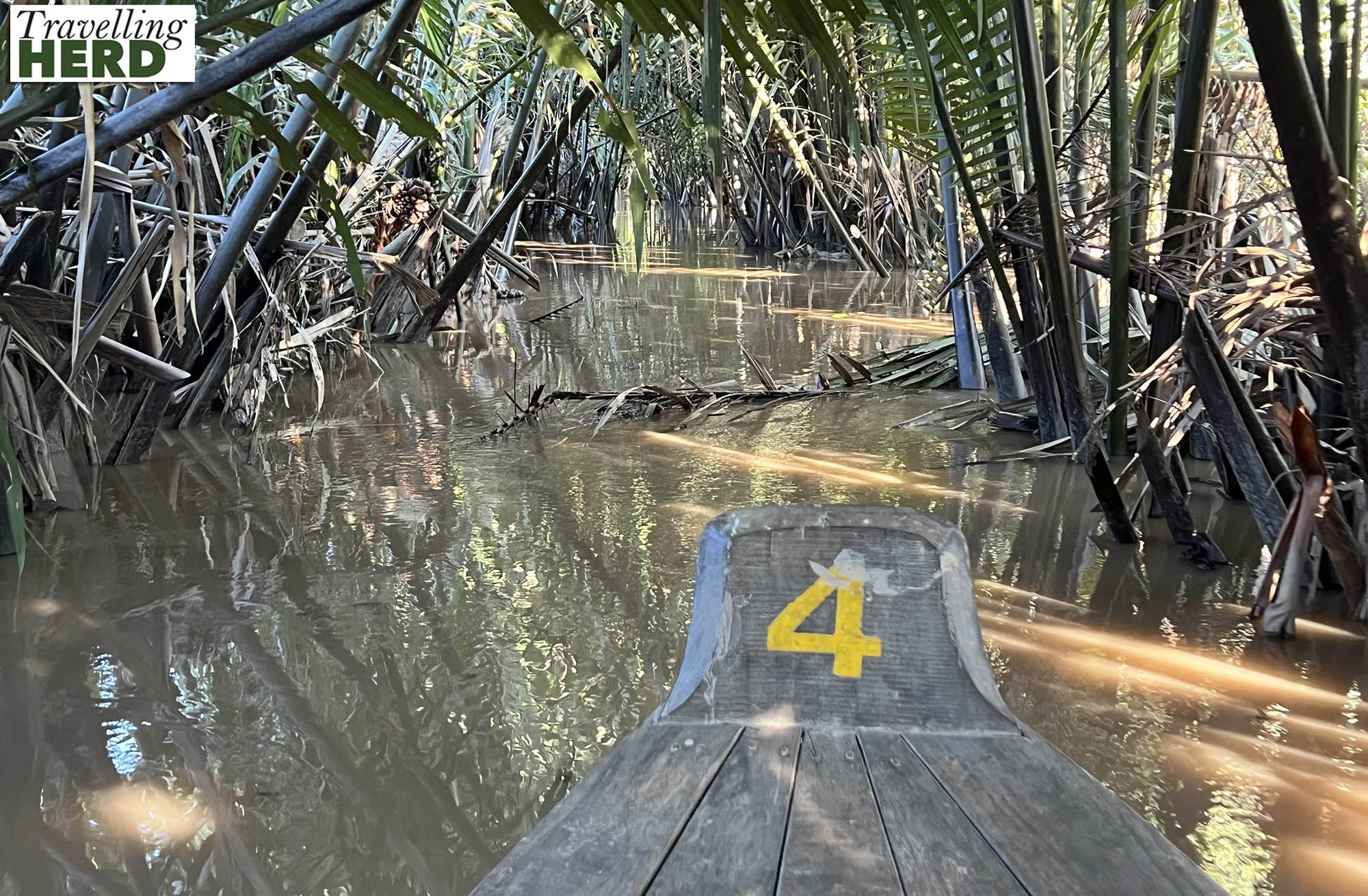
Arriving back at the sampan, we were returned to the RV Indochina Pandaw ready to start our journey upstream towards Cambodia.

We were moored overnight near Cai Be and were briefed on the next day’s activities before enjoying the sunset [see Selfie of the day].

The evening entertainment was billed as a Vietnamese dance troupe but was also an education in local musical instruments. One of the musicians gave a rendition of a traditional Vietnamese tale about a drunk, which although in Vietnamese and therefore unintelligible to us, reminded Matilda of the drunken porter scene in Macbeth or perhaps one with Falstaff. Some characters are universal.
Video of the day:
Selfie of the day:
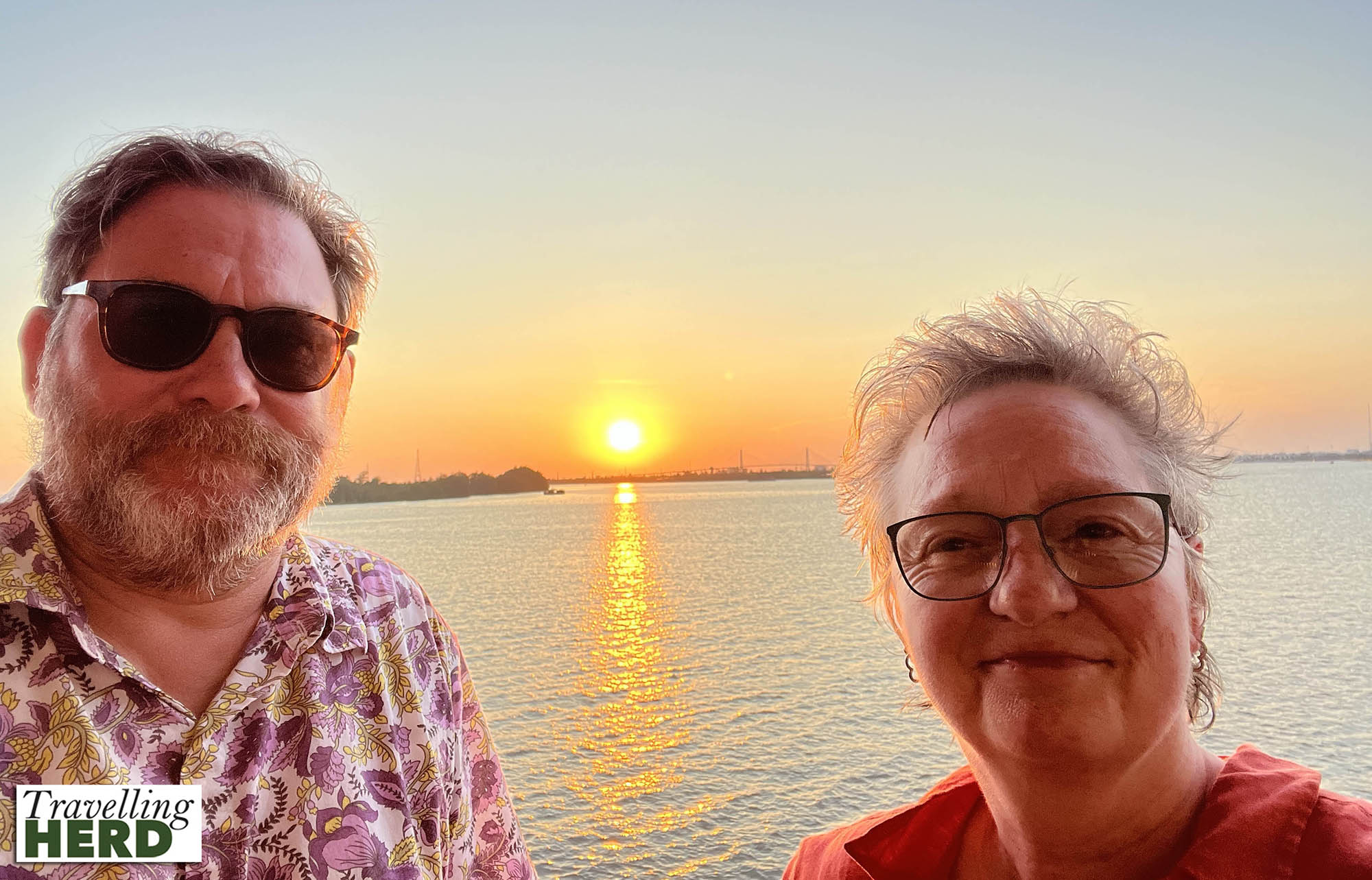
Dish of the day:

Route Map:
